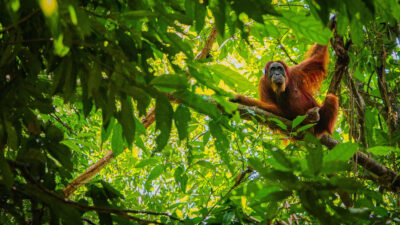
World Orangutan Day: 5 of the best places to see orangutans in the wild
All three species of orangutan – Bornean, Sumatran and Tapauli – are critically endangered
Only found on two islands – Borneo and Sumatra – you’ll have to travel to the rainforests of Indonesia or Malaysia to catch a glimpse of an orangutan in the wild.
There are only three species of the distinctive red-furred great apes, all of which are critically endangered, with just 104,700 Bornean, 14,000 Sumatran, and 800 Tapauli orangutans left – which is why World Orangutan Day (19 August) is more important than ever.
With a low productive rate – orangutans give birth to one infant at a time every three to five years – and threats including poaching, the illegal pet trade, and deforestation for logging and palm oil, it is believed that the number of Bornean orangutans has decreased by more than 60% in 60 years, and 80% for Sumatran orangutans over the last 75 years.
Still, there are a number of protected reserves and areas where you can see these creatures in their natural environment. Here are five we think you should visit.
1. Danum Valley, Sabah, Malaysia

Forming part of a 400 sq km rainforest reserve, the Danum Valley arguably offers your best chance of seeing the ‘old man of the jungle’ in his natural environment. Studies put the number of orangutans in the area at around 500, with as many as 17 resident living in the immediate vicinity of the Borneo Rainforest Lodge.
Set in a stunning location on a bend on the Danum River, the lodge offers a network of well laid out trails and resident guides who will help you to spot wild orangutan. An early morning stroll on their canopy walkway is a delight and often the best way to spot orangutans and other primates.
Staying at the Danum Valley Field Centre is another option. Primarily a research station, this is a no-thrills stay, but you have the option to book packages with guides who will take you on treks and point out all the local flora and fauna.
Read next: Borneo up close: Uncovering the secrets of wild Sabah
2. Gunung Leuser, Sumatra, Indonesia
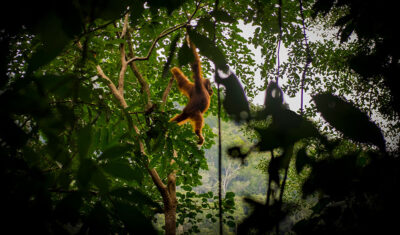
Lighter in colour, the Sumatran orangutan also has with a narrower face and longer beard than their cousins in Borneo. They are also critically endangered, and this abandoned sanctuary in the Gunung Leuser National Park offers your best chance of seeing them in the wild. It’s also the only place on earth where the Sumatran tiger, Sumatran rhino, Sumatran elephant and Sumatran orangutan coexist, although your chances of seeing them all are quite slim.
The sanctuary had rehabilitated and released over 200 orangutans but was closed in 2005 when the surrounding area was deemed ‘saturated’ with orangutan. Both wild and rehabilitated animals remain in the area, often returning to the abandoned feeding station, and they can be spotted from the network of walking trails here. The Bukit Lawang Eco-Lodge, on the edge of the park, makes an excellent base.
You can only visit Gunung Leuser National Park with a guide – you can book treks ranging from six hours up to five days with Sumatra Orangutan Explore. Be sure to read reviews before booking through other providers as there are some unethical guides operating in the park.
Read next: Ethical wildlife experiences: How to find responsibly-managed animal encounters
3. Kinabatangan River, Sabah, Malaysia
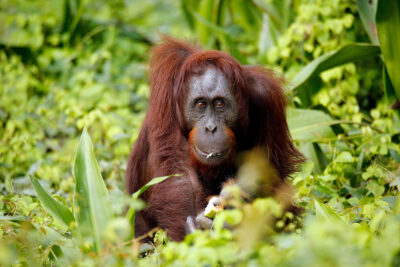
Sabah’s longest river, the Kinabatangan, is lined with protected reserves, making it a good place to spot not only wild orangutan, but pygmy elephants, proboscis monkeys, crocodiles and all of Borneo’s native hornbill species as well.
4. Tanjung Puting, Kalimantan, Indonesia
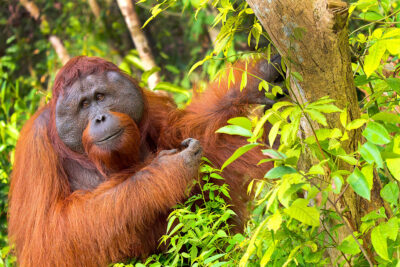
Covering 3,040 sq km of lowland tropical rainforest and peat-swamp forest, Tanjung Puting National Park is one of the most important sanctuaries for wild orangutans in Borneo. Made famous by the long-term research carried out by Dr Biruté Mary Galdikas at Camp Leakey, the park is now home to over 4,400 orangutans.
5. Tabin Wildlife Reserve, Sabah, Malaysia
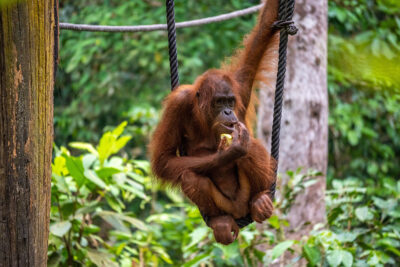
Created in 1984 to help preserve the region’s disappearing wildlife, the Tabin Wildlife Reserve shelters an incredibly diverse range of flora and fauna, including civet and leopard cats, hornbills, pygmy elephants and western tarsiers.


















